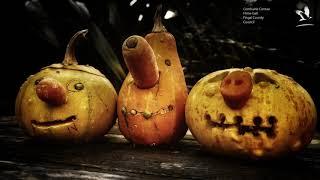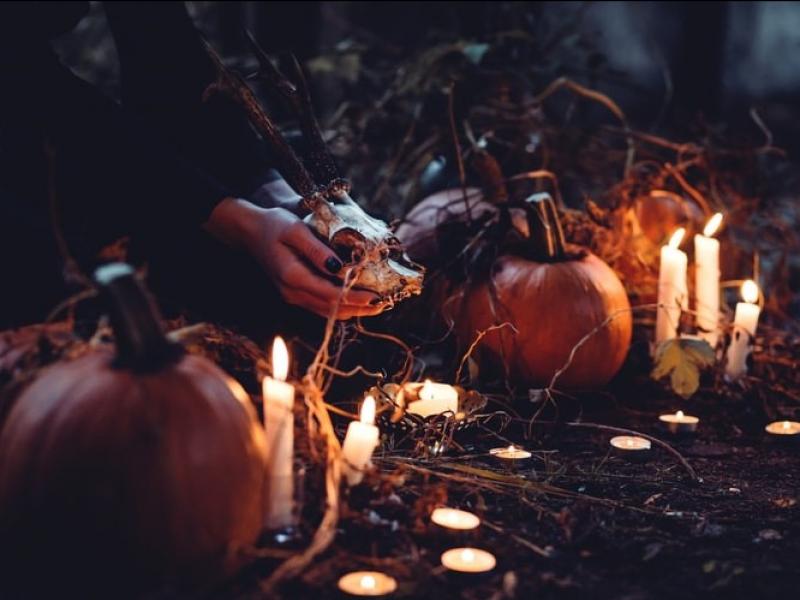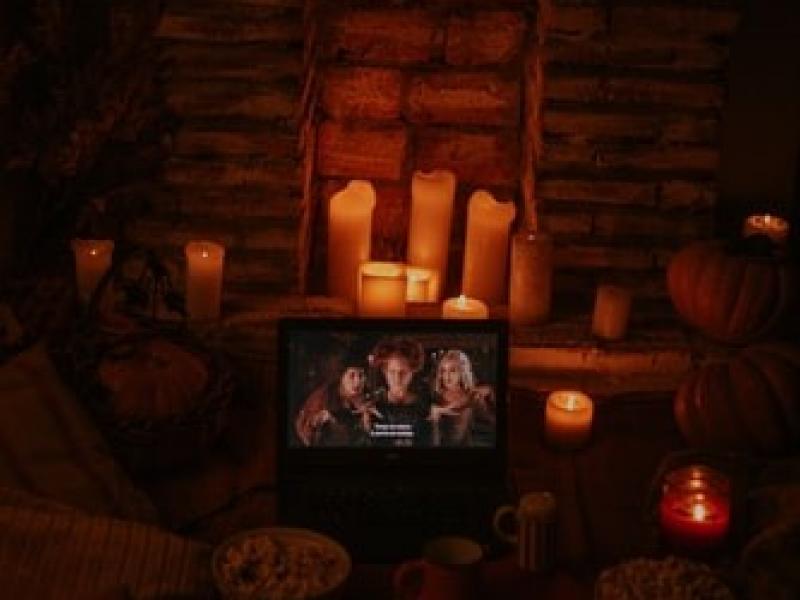Tips for Celebrating Halloween 2020
Pumpkin Carving
The current restrictions mean that this year’s Halloween celebrations will have to be a little bit different. However, that doesn’t mean we can’t enjoy many of the fantastic traditions of All Hallows Eve. In fact, the festival of Samhain marks the beginning of storytelling season! With that in mind, Aoife from Blanchardstown Library suggests some stories, traditions, games and recipes that can be enjoyed by the whole family and will help to make Halloween 2020 a special one.
Starting with its origins, the word Halloween comes from ‘All Hallows Eve’, a Christian festival held on October 31st to commemorate saints and the dead. However, ‘All Hallows Eve’ was only introduced to Ireland in the medieval period. Before this, a pagan holiday called Samhain was celebrated by the prehistoric people of Ireland. The word Samhain can be split into sam (meaning summer) and fuin (meaning end)[1]. This time of year was important to prehistoric people because it marked the end of summer and the start of winter and was considered to be the start of a new year[2].
It was also an important time of year agriculturally as it was the end of the harvest when the last of the crops were gathered in before the start of winter. Herds of animals such as cows and pigs were moved from summer pasture lands to their winter grounds at this time. The focus shifted from outdoor farming work to indoor domestic work and people looked to establish protections for their houses by crafting symbols and enacting special customs.
Traditional folk stories tell us of otherworld fairies coming out into the mortal world on Samhain night. Families would leave offerings of food such as milk and porridge outside their houses for the fairies. In fact, leaving the safety of the house on this night was avoided unless necessary[3]. When somebody did need to venture out it was always in disguise to allow them to avoid detection by the fairies. It is thought this could be where the tradition of wearing disguises at Halloween comes from.
Traditional Halloween masks held by Irish Folklife Collections, National Museum of Ireland.
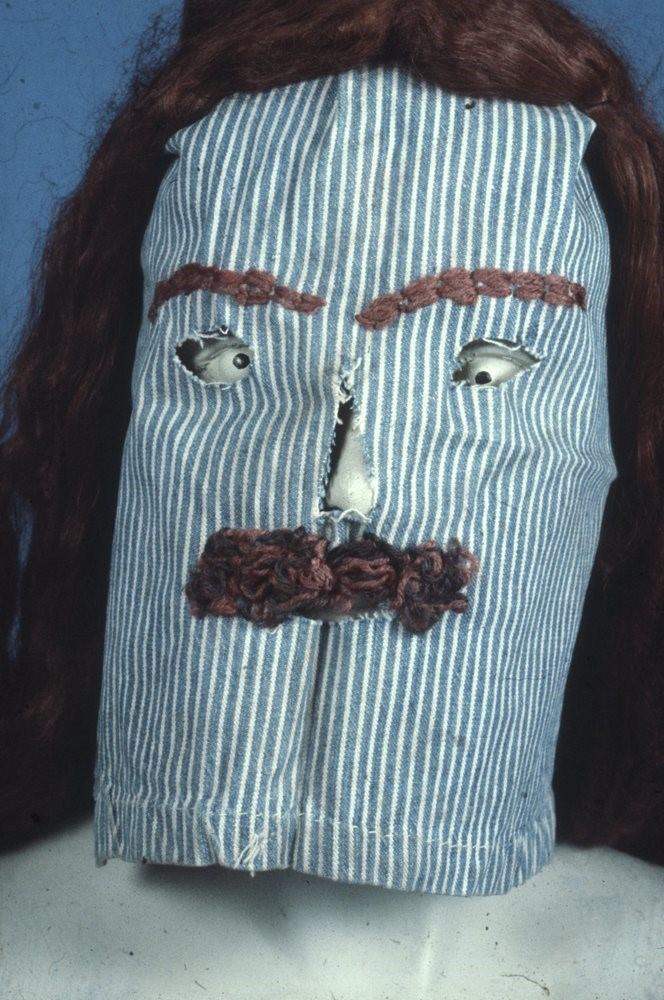
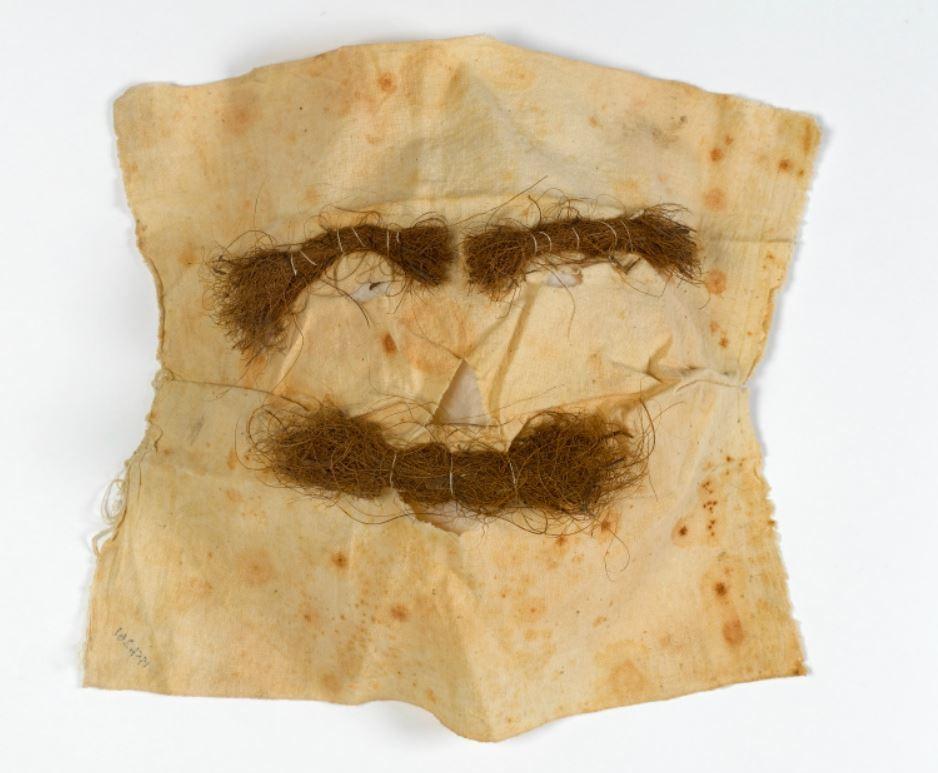
So, if people avoided going out and trick-or-treating was not practiced on this night then what did people do to celebrate Halloween? Well, they told stories! In fact, the festival of Samhain marks the beginning of the storytelling season. In traditional Irish houses, the hearth or an open fire formed the centre of the house. Chairs were set out around the fire for family members who had died, and everyone gathered around to listen to stories being told. Some Irish myths and folktales are set during the festival of Samhain and these tales may have been told on the night itself. One example of this is a story about a hero called Nera (one of a series of adventures called Echtrae Nera in Irish) who must carry a corpse around on Samhain night.
Here is a link to a Samhain special podcast by Story Archaeology about this story. Here is another retelling of the same story by the National Leprechaun Museum storytellers (the story itself can be found between 0.30.22 and 0.37.10). Samhain traditions are also discussed in two episodes of the National Folklore Archive’s podcast called Blúiríní Béaloidis (Folklore Fragments) which can be accessed here.
In addition to stories, special games were played by members of the household. Some of these will be familiar such as snap apple and bobbing for apples. However, fortune telling games were also played. For example, people would put objects such as apples or spinning wheel parts under their pillows to induce dreams about their future spouse. Many of these games involved blindfolding the participants. [Instructions for playing one of these blindfold games can be found below.]
Feasting was another important aspect of the festival of Samhain. According to Irish myths, feasting may have played a central role at Samhain with prehistoric people feasting on either beef or pork[4]. It has even been suggested that the burning of the bones of animals feasted upon is where the word bonfire (from bonefire) comes from. If you are not a meat eater, never fear as there are other traditional Hallowe’en foods to choose from including báirín breac, colcannon (mashed potato with cabbage and onions) and boxty (potato cakes). [Traditional recipes for some of these dishes can be found below.]
The báirín breac traditionally contained more items than just a ring. These included a thimble (spinsterhood); a button (bachelorhood); a rag (poverty); a coin (wealth) and a crucifix (the taking up of religious orders). The inclusion of these items again seems to be related to predicting the future. Many of these items may not be appropriate to include in a breac today however, if baking your own breac you could decide to include items of relevance or meaning to you.
Special items were usually crafted at Halloween. These included turnip lanterns which are the original version of the pumpkin lanterns carved for our modern Halloween celebrations. Turnip lanterns, while harder to carve than pumpkins, can make for much scarier lanterns! [Instructions for creating your own turnip lanterns can be found below.]
So, what can you do this year to celebrate an alternative Halloween safely? Well following traditional customs means spending Halloween day carving turnip lanterns and preparing a feast while Halloween night was spent gathered around the fire telling spooky stories and playing divination games.
Happy Halloween from Fingal Libraries!
[1] (MacKillop, 2005: 97)
[2] (Marshall, 2003: 14)
[3] (Alwyn &Brinley Rees, 1968: 90)
[4] (Mag Fhloinn, 2016: 284-5)
Traditional Halloween recipes, crafts, and games (taken from Celebrating Irish Festivals: Calendar of Seasonal Celebration, 2003 by Ruth Marshall):
Colcannon
Ingredients:
1lb/450g kale or cabbage
2 cups water
1 tbsp olive oil
1 lb/450g potatoes, peeled and quartered
1 cup chopped leeks
1 cup milk
2 oz/50g melted butter
Salt and pepper
1 tbsp chopped parsley
Method:
Cook, drain and mash the potatoes.
Simmer the kale or cabbage with the olive oil in 2 cups water for 10 minutes. Drain and chop finely.
Simmer the leeks in the milk for 10 minutes.
Add the chopped kale or cabbage, leeks and milk to the mashed potato and stir well.
Add salt and pepper to taste.
Form the mixture into a mound on a large plate and pour over the melted butter.
Garnish with parsley.
Báirín Breac
Ingredients:
1 lb/450g flour
2oz/ 50g butter
8oz/225g sultanas
8 oz/225g currants
1 tsp dried yeast
Half pint/ 275 ml milk, warmed
2 o/50g sugar
4 oz/110g mixed peel
1 tsp ground cinnamon
Pinch nutmeg
Pinch salt
2 eggs, beaten
A ring wrapped in greaseproof paper
Method
Add the yeast and half the sugar to the warm milk and leave to sit in a warm place.
Sift the flour together with the salt and spices into a large bowl, then rub in the butter. Mix in the rest of the sugar.
Add the warmed milk and yeast mixture and the beaten eggs and beat well. Fold in the fruit and peel and any trinkets.
Turn the mixture into a greased and lined 8-inch (20cm) cake tin. Cover with a ea towel and leave in a warm place to rise until it has doubled in size. Bake in a hot oven for one hour.
Fortune Telling
You will need:
4 plates or bowls
Water, flour, clay and a ring.
Method:
Four plates are laid on a table. One plate contains water, another holds a ring, one holds clay and the fourth holds flour. Players are blindfolded and led to the table. The four plates are rearranged each time, so that no one knows which lies where. The player’s fortune for the coming year is told according to which plate she places her hand upon.
Water foretells a journey; the ring foretells love; clay foretells a death and the flour, wealth.
Turnip Lantern
You will need:
A turnip
A large sharp knife
Small pointed knife
Apple corer
Tablespoon
A tealight
Method:
With a large, sharp knife, cut off the top of the turnip. Do this as neatly as possible because this will become the lid of your lantern.
To hollow out the turnip, use the apple corer and a smaller knife to loosen the pulp. Remove the pulp with the tablespoon.
Once the middle has been removed work more cautiously, removing smaller pieces until the walls of the turnip are uniformly thick and there is a flat spot at the base in which to place a candle.
From the outside cut holes for the eyes, nose, and mouth to make a face for your turnip.
Place a tealight inside the lantern and hollow out the lid, cutting holes to allow smoke out.
References:
Alwyn & Brinley Rees, (1968): Celtic Heritage, Thames and Hudson.
Evans, E. Estyn, (1957): Irish Folk Ways, London.
MacKillop, James, (2005): Myths & Legends of the Celts, London/Dublin.
Mag Fhloinn, Bill, (2016): Blood Rite: The Feast of St. Martin in Ireland, Helsinki.
Marshall, Ruth, (2003): Celebrating Irish Festivals, Gloucestershire.
